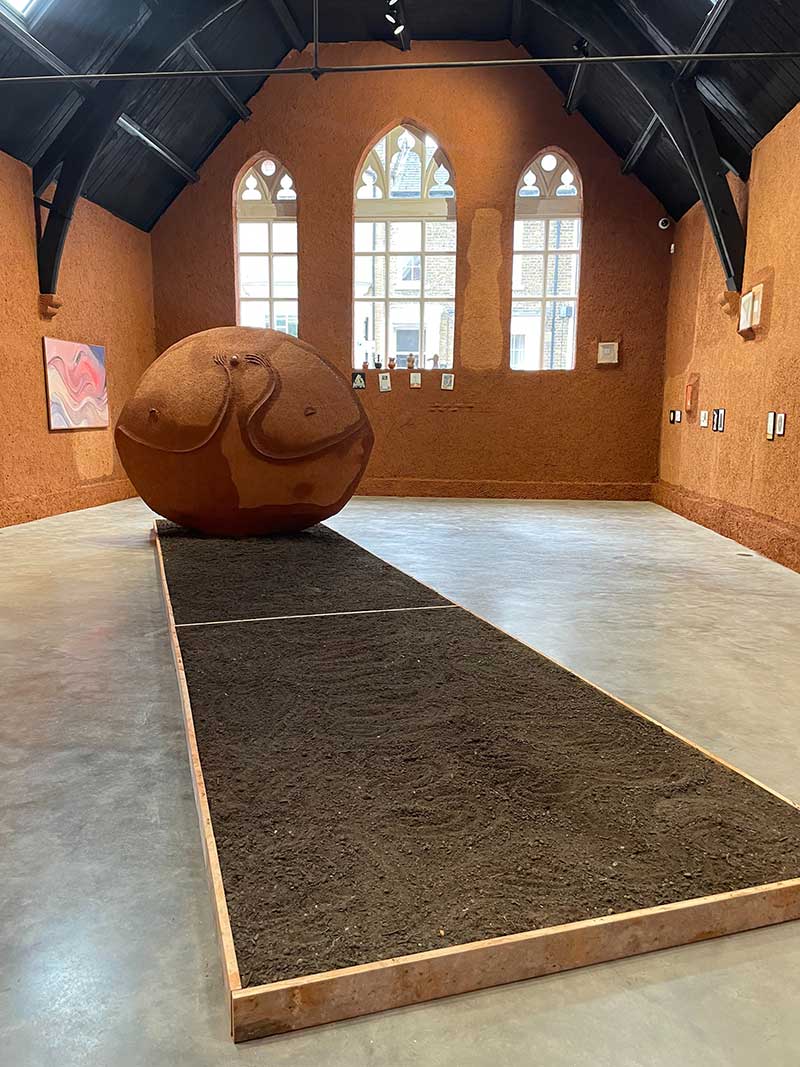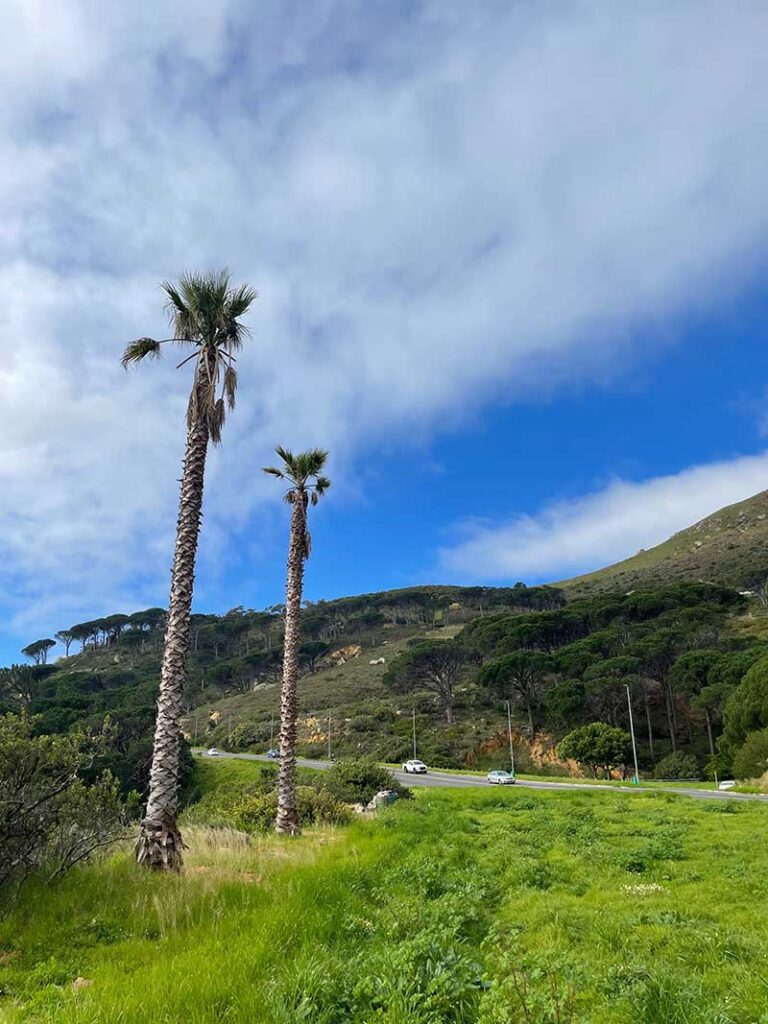Gardiner Museum Curatorial Residency Research Trip: London & Cape Town
By Sarah Edo, Gardiner Museum 2023 Curatorial Resident
Earlier this spring, I joined the Gardiner Museum as the 2023 Curatorial Resident. Generously supported by the Rebanks Family, this residency program supports the next generation of curators with an opportunity to develop, research, and create a small-scale museum exhibition. My exhibition project, Genealogies of Sustenance (working title), mediates on themes of sustenance, embodied memory, and Afro-diasporic plant life stories through traditional and experimental African (southern/western) pottery forms and practices. The exhibition will feature newly created sculptural installations from Zimbabwean-Canadian artist Chiedza Pasipanodya and Cameroonian-Belgian, Montreal-based artist Mallory Lowe Mpoka, as well as Nigerian-American filmmaker Zainab Aliyu. The project will be on view in the Gardiner’s lobby from January to May 2024.

Installation photo of Usos y constumbres, 2023. Featuring the work of Gabriel Chaile in collaboration with Laura Ojeda Bar
This summer, as part of the residency, I had the opportunity to travel and conduct international research in London, UK, and Cape Town, South Africa. I was drawn to these cities because of the plethora of Black and brown artists actively thriving within the contemporary arts scene and making their mark in the field of ceramic arts. Their museums, commercial galleries, and artist-run centres offered a wealth of special exhibitions and collections, focused on sculpture.
In South London, one of the most resonant exhibitions I visited was at Studio Voltaire, which featured Argentinian artist Gabriel Chaile in collaboration with Laura Ojeda Bär in Usos y costumbres (which translates to ‘customs and traditions’). Upon entering, I was struck to find the church walls of the repurposed Victorian mission hall entirely coated with terracotta-coloured clay. Inspired by historic Argentinian churches that were once fashioned with compacted earth, the artist disrupts standards of museological displays with this tactile transformation of the exhibition space.

Installation photo of Usos y constumbres, 2023. Featuring the work of Gabriel Chaile in collaboration with Laura Ojeda Bär
At the center of the space lays a long wooden angular riser with dark brown soil that is traced with playful swirls which lead to a monumental round sculpture. Chaile’s large-scale sculptures are informed by his research on ancestral and Indigenous knowledge systems in Argentina. Similarly drawn to the word ‘genealogy’, Chaile’s sculptures are led by his investigations on a theory that he refers to as a “genealogy of form”, which explores the intersection of Indigenous epistemologies and sculptural form and characteristics. This exhibition has been helpful for my research, especially because I am working with artists who draw upon earth as material, not only in clay form but also in soil, sand, and dirt, in addition to ancestral memory and knowledge. It was incredibly generative to witness Chaile’s ideological underpinnings materialized into such a potent and gorgeous exhibition.
In addition to its wide-ranging selection of museums and galleries, London is home to many art libraries and independent bookshops. I took advantage of the special collections at the School of Oriental and African (SOAS) Art Library, the British Library, and archival community hubs like the Feminist Library in Peckham. There, my research focused on Black women sculptors, African/Afro-diasporic art history, art criticism, curatorial practice, and special exhibition catalogues. At Whitechapel Gallery, I had the chance to consult the archives tied to the exhibition Theaster Gates: A Clay Sermon (2021) and gain a better understanding of how the Chicago-based artist synchronizes ideas of material culture and objecthood through pottery, and how he explores meaning-making though the lens of blackness and queerness.

Storage photo of Zizipho Poswa’s work Amagodi, Shona, 2022
While in Cape Town, I connected with Southern Guild Gallery, one of the leading African galleries at the nexus of fine art and design. The Gallery facilitated studio visits with several of their phenomenal artists including sculptors Zizipho Poswa and Martine Jackson. Martine Jackson’s latest vessels are inspired by the curvy contours of the mountain enclaves she would observe during road trips to Namibia. Poswa’s recent sculptures pay homage to the traditional and contemporary lives of Xhosa women through the literal weight of labour. In the 2023 series Umthwalo (Load), she creates monumental sculptures that take inspiration from women transporting heavy foods on their heads by foot. Southern Guild Gallery also provided access to their storage facility which held incredible works by Andile Dyalvane and Madoda Fani. Dyalvane’s practice inspired the development of my project in its early stages, as his themes often orbit storytelling of South African mythology, dreamscapes, and ancestral memory which he explores through a variety of materials including earthenware, steel, and locally foraged copper.

Storage photo of Zizipho Poswa’s works Ababalwe Tshaka, South Africa, 2022, and Tendai Munyamani, Zimbabwe, 2022
During this trip, I noticed a common thread amongst artists across Cape Town and the Black diaspora: the creation of environmentally-informed sculptures through inspiration, process, and methodology. While there is a long and rich history of human and vessel forms moulded from clay across the continent, I am developing a deeper understanding of the ways in which varying ecological landscapes, whether real in immediate surroundings or historical in ancestral memory, or even imagined, serve as ripe inspiration to artists working in sculpture. It was exciting to make these connections amongst artist communities across geolocations of Africa, Europe, and North America. The ecologically inspired work I encountered during my travels are highly resonant as I think and work with artists that are, too, inspired by nature formations such as the mangroves scattered along the coast of West Africa and the Caribbean Islands, or baobab fruits grown across the dry woodlands of Zimbabwe. I believe the act of creating these works is a meditation and practice toward extending life-sustaining possibility to Black life.
I ended my time in Cape Town visiting a cluster of art libraries and bookshops. Some of my favorites were the library at Michaelis School of Fine Arts at the University of Cape Town and the independent Africana-specialized Clarke’s Bookshop. Along with Cape Town’s incredibly robust art scene with thriving artists, both commercially and community-based, the city is breathtakingly beautiful with its scenic Table Top Mountains, wide-ranging biodiverse plant and animal life and ocean views.
